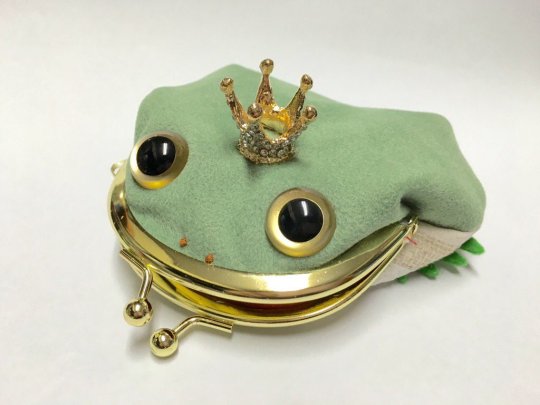#fashionable frogs
Text

shoulder bag !
1 note
·
View note
Text


#frog#cottagecore#nature#animals#coin purse#want#need#fashion#cutecore#froggy#frogcore#aesthetic#weirdcore#fairycore#princesscore#things#objects#silly#sillycore#green#greencore#magic#spring#springcore#fairy#ribbit#ribbits#forestcore#faeires
21K notes
·
View notes
Text
Me after putting on my mascara
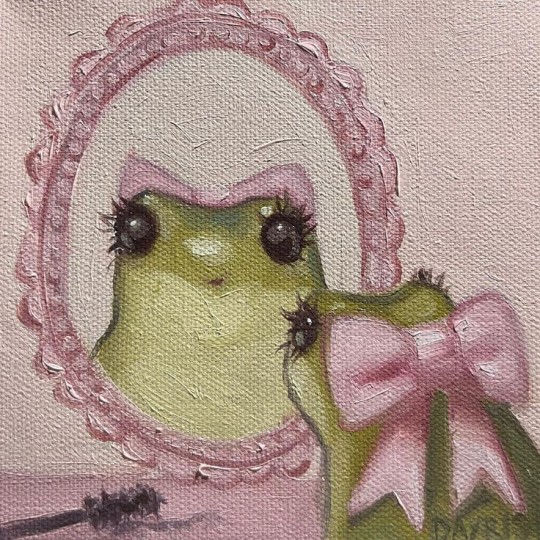
#pink#sanrio#pinkcore#pastel#pink aesthetic#popular#pastel pink#pink blog#pink moodboard#viral#frog#bows#mascara#makeup#dollete fashion#dollete aesthetic#dollcore#dollette#fashion dolls#coquette dollete#princess core#coquette girl#coqette#coquette#coqeutte#cute art#cute#pretty#pink pilates girl#pink pilates princess
25K notes
·
View notes
Text
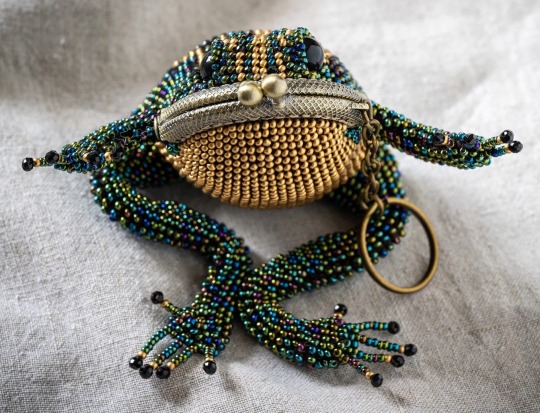


Beaded Frog Purses // Julia Mainwaring
5K notes
·
View notes
Text
#art#funny#lol#haha#humor#meme#memes#tiktok#goth#gothic#frogs#wholesome#fashion#beauty#liberal arts#artists on tumblr#gay#queer#lgbt#lgbtqia
2K notes
·
View notes
Text
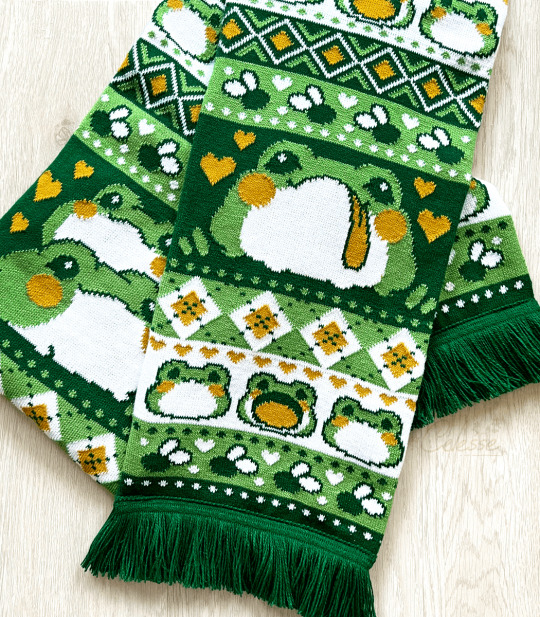
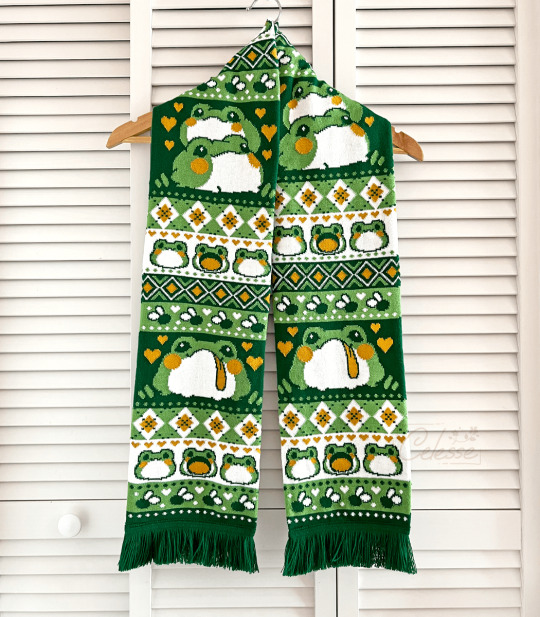
Blobfrogs to keep you warm 🧣🐸💕
Available here! ✨
#scarf#scarves#frogs#blobfrogs#knit scarf#winter fashion#froggy#frog art#frogcore#i love frogs#green#shop#merch
2K notes
·
View notes
Text

im working on patterns for the fall! :^) i was feeling inspired with this one and only realized after i was partway into sketching that i made frog and cranberries must be fall: the pattern
#botanical#frog#frog and cranberries#nature fashion#artist brand#illustrator on tumblr#indie fashion
2K notes
·
View notes
Photo

I tried to answer this succinctly, but it turned into an essay. (Sorry.)
The Princess and the Frog was not accurate, strictly speaking, but dinging it for that would be like criticizing the Lion King for not being a realistic wildlife documentary. Accuracy wasn't really the point. Given the fantastical elements and fictional nations like “Maldonia”, I suppose we're meant to understand this as a bit removed from the real New Orleans. It's more a a jazz-flavored fairy tale than a historical fiction.
But for discussion's sake....
Is it fashion-accurate to its 1926 timeframe? Ehhh, sort of. It pays homage to 20s fashion trends with cloche hats, furs and feathery headpieces, but without fully committing to it. The waistline on almost all of Tiana's clothing is too high for the 20s, and the the shapes of her fancier costumes take a lot of liberties, or deviate wildly from the style of the period.
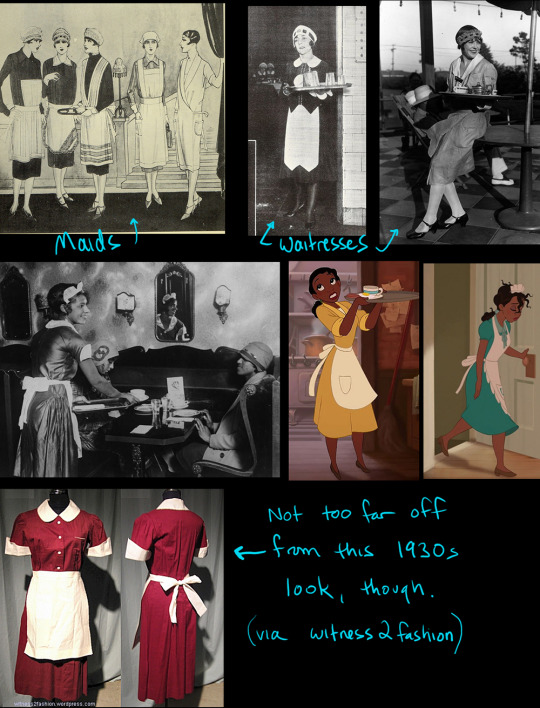
In the 20s, dresses (including workaday stuff) tended to have a straight up-and-down shape to it - kind of a low-waisted rectangle that de-emphasized curves instead of highlighting them. There are valid reasons to play fast and loose with that, though (something I’m definitely guilty of as well). One of those reasons is communication.
For instance, speculatively, the filmmakers wrote Tiana as a hard-working waitress and wanted her to look the part, so they made the choice to clothe her in something familiar - that gingham dress of mid-century shape that we broadly associate with diner waitresses. Actual waitress uniforms of the 20s had a fair bit of overlap with maid uniforms at the time too, and I can see why they wouldn't want to risk the confusion. It's more important to communicate clearly with the larger audience than to appease a small faction of fashion nerds who'd notice or care about the precision.
I don't think it's a case of the designers failing to do their research - I'm sure they had piles of references, and maybe even consultants - but they also had to have priorities.
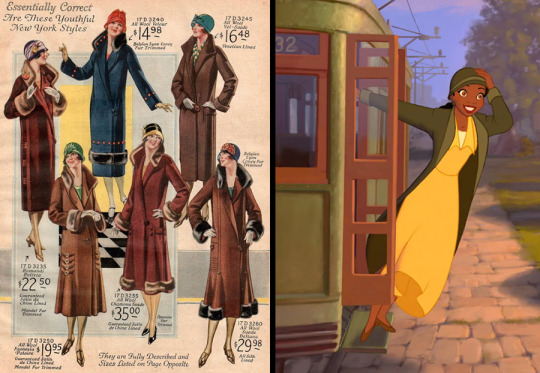
With her hat and coat on, she looks a lot more 1920s-shaped.
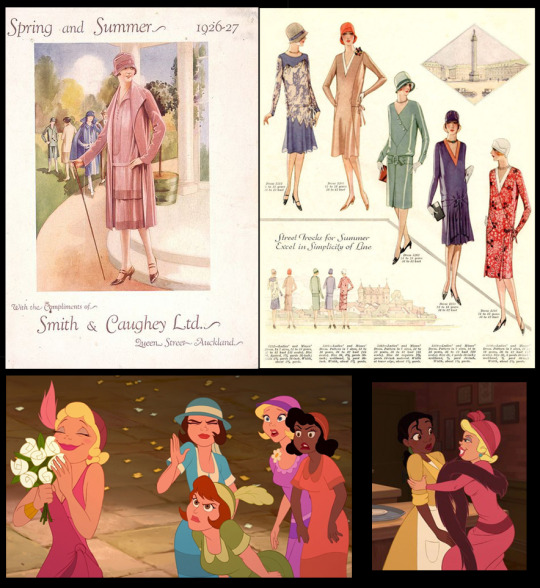
Pretty consistently, the indication of the characteristic 1920s drop waist is there, but the approach otherwise ignores the 20s silhouette. The clothes hug the body too much. This may be about appealing to a 2000s audience, visually speaking, but also could be an animation thing. Maybe both. For practical reasons, clothes in 2d animation are usually more a sort of second skin than something that wears or behaves like realistic fabric.

These are not in the 1920s ballpark at all. Tiana's blue gown looks like your basic Disney brand invention. Strapless things would have been extremely unusual and the overall shape is far out of step. Excusable, I guess, because it's a costume in context. Charlotte looks like she’s heading for a mimosa brunch in a modern maxi dress.
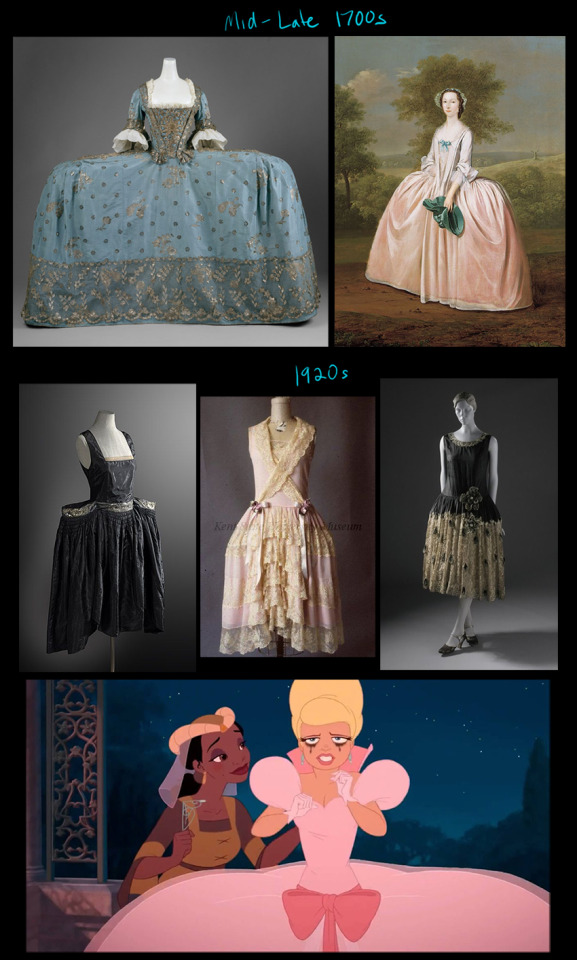
Charlotte's princess dress did seem to be calling back to the ultra-wide pannier side hoops of the 18th century - something that made a reappearance for part of the 20s, albeit in much milder form called robe de style. I'm not sure if the filmmakers were alluding to that at all, really, but either way, her dress is hilarious.
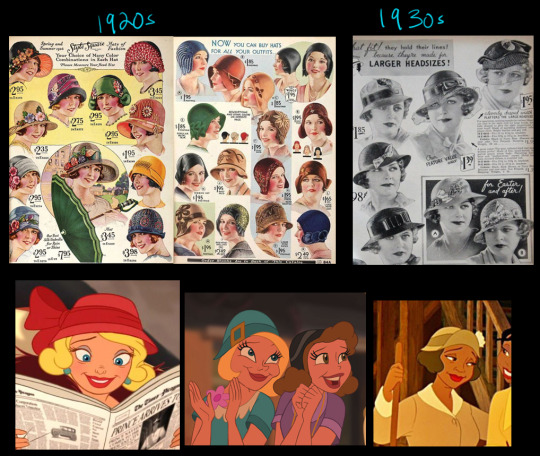
They only went about halfway with the cloche hats. The 1920s cloche really encapsulated the cranium, almost entirely covered bobbed hair, and obscured much of the face from certain angles, so it's easy to see why they've been somewhat reined in for the film. Still, it ends up looking more 1930s, where the hats started to recede away from the face, evolving in the direction of the pillbox.
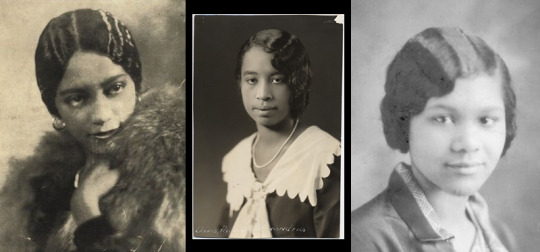
Similarly, Tiana's hair is not very reminiscent of the bobbed, close-to-the-cranium style of the period, but I think that could legitimately be written off as characterization. She's not at all the type of person who'd fuss about going à la mode. Not everyone bobbed and finger-waved their hair.

The clothes Prince Naveen is introduced in are very 1920s collegiate in spirit - the wide-leg oxford bags, the sleeveless pullover sweater, the flat cap, and high, stiff collar. The ukulele and banjolele were pretty trendy instruments at the time too.
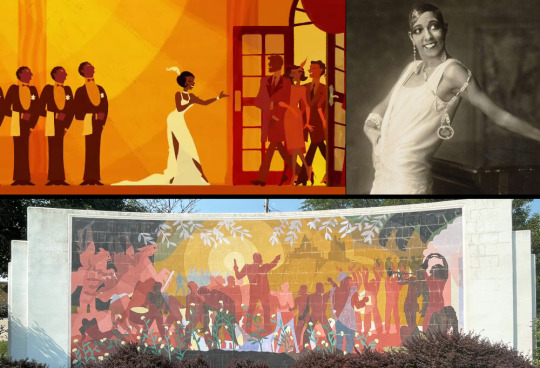
Definitely some Josephine Baker vibes here. Also, the look of this whole fantasy sequence was reportedly inspired by the works of Aaron Douglas, a luminary painter of the Harlem Renaissance known for his depictions of the lives of African-Americans. (The mural is in Topeka, Kansas.)
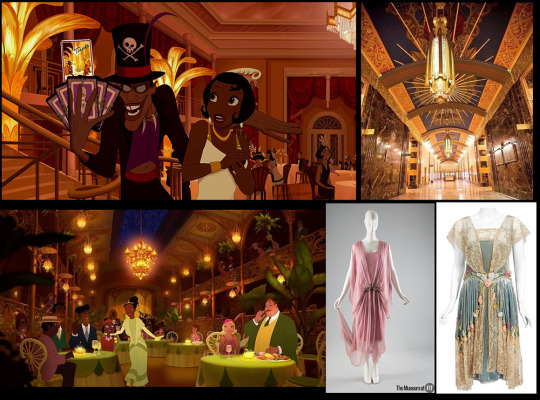
They pretty much nailed the Art Deco. It's gorgeous. Looks somewhat inspired by the interiors of some of the Ralph Walker-designed NYC architecture, plus some French Quarter balcony flair for the final manifestation of Tiana's Place. Her dress here does resemble some gauzy mid-1920s looks, too.
------------------------------------------------
Culturally speaking...
New Orleans is an unusual place. Because some of the colonial Spanish and French laws and conventions that New Orleans evolved under persisted even after its inception into the United States; because it was such a heterogeneous hub of indigenous and immigrant peoples; and because it had a considerable population of free people of color (mostly Creole), it did not function quite like the rest of the South leading up to the Civil War, nor for a while after. Its particular coalescence of cultures made it its own unique sort of culture within the country, within the region, within the state of Louisiana even. By the early 20th century, though, regardless of the not-very-binary nature of New Orleans, Jim Crow laws were enforcing a literal black-and-white distinction, and not an evenhanded one, by far. In that aspect, the city had begun to resemble the rest of the South.
The film nods at the wealth disparity, but goes on to paint a pretty rosy picture of race and class relations at the time. Still it's not unbelievable that some people were exceptions to the rules. You could probably find a few compartments of old New Orleans society that resisted segregation or certain prejudicial norms, preferring to do things their own way. That aside, the film wasn't trying to confront these topics. Not every piece of media should have to. Sometimes breaking away from miserable period piece stereotypes is refreshing. I'm not sure it could have handled that meaningfully given the running time, narrow story focus, and intended audience, anyhow. (But you could perhaps also make a case that family films habitually underestimate younger audiences in this way.)
------------------------------------------------
Raymond the firefly I guess is the film's Cajun representation. There's not much to say about it, except perhaps to note that Evangeline is a reference to the heroine of a Longfellow poem of the same name. The poem is an epic romance set during the expulsion of the Acadians from the eastern provinces of Canada and the northernmost reaches of the American colonies (now Maine) by the British in the mid-1700s. Many exiled Acadians gradually migrated south to francophone-friendly Louisiana, settling into the prairies and bayous, where 'Acadian' truncated into the pronunciation 'Cajun'. Evangeline - who is only finally reunited with her love when he’s on his deathbed - has become an emblem of the heartbreak, separation and faithful hope of that cultural history, and there are parishes, statues and other landmarks named after the her throughout Louisiana.
------------------------------------------------
Voodoo does have a very historical presence in New Orleans, having arrived both directly from West Africa and by way of the Haitian diaspora (where it would more properly be called Vodou). While I don't think Disney's treatment of it was especially sensitive or serious, it also wasn't the grotesquely off-base sort of thing that media of the past has been known to do. It was largely whittled down to a magical plot component, but it wasn't so fully repurposed that it didn't resemble Voodoo at all either - and that's mostly owing to the characters, because it does appear the writers pulled from history there.
It’s apparently widely held that Dr. Facilier is a Baron Samedi caricature - and likely that's true, in part - but I have the impression he's also influenced by Doctor John. Not the 20th century funk musician, but the antebellum “Voodoo King” of New Orleans. Doctor John (also called Bayou John, Jean La Ficelle, and other aliases) claimed to be a Senegalese prince. He became well known as a potion man and romance-focused prognosticator to people from all corners of society. Though highly celebrated and financially successful at his peak, he seems ultimately remembered as an exploitative villain.
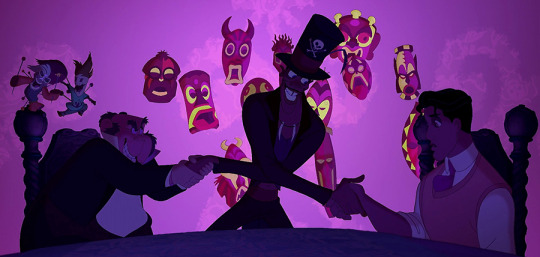
To my recollection, the film sort of gingerly avoids referring to Facilier as a Voodoo practitioner directly (I think he's more generically called a witch doctor in the script?) but it does seem to imply his 'friends on the other side' are a consortium of loa. It's mostly abbreviated into nebulously evil-seeming special FX, glazing over any specificity or dimensionality, but it does also loop back around as a vehicle of moral justice. Loa are all very individualistic and multi-faceted, but they do have reciprocal rules for asking favors of them.
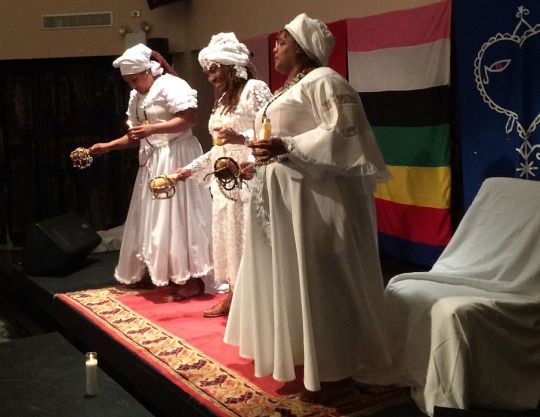
There's also the benevolent counterpart in Mama Odie's character. Her wearing ritual whites has a definite basis in Voodoo/Vodou practice, and her depiction as a fairy godmother-like figure isn't entirely out of step with how a mambo may have been perceived...in a very general sense. They were/are ceremonial leaders and community bastions who people would seek out for help, advice and spiritual guidance. More than just emanating matronly good vibes, though, some have wielded considerable political and economic power.
(Just my opinions here. I've done a lot of reading on the subject for research but I'm no authority with any special insider understanding of Voodoo, and I really shouldn't be relied upon as an arbiter of who has or hasn't done it justice in fiction.)
------------------------------------------------
In summary--
Culturally, I think the film is respectably informed but paints a superficially genteel picture. The set pieces are gorgeous, but the story mostly delivers a sort of veneer of New Orleanishness. And as for fashion, well, it’s the 1920s run through a Disney filter. It’s very pretty, but it’s only as proximally accurate as seemed practical.
I don’t know that any of that really matters so much as whether or not it achieved what it intended, though. As a charming yarn and as a tribute to New Orleans and the Jazz age, I think it’s mostly successful. It’s also really beautifully animated!
#princess and the frog#disney#1920s#new orleans#jazz#fashion#voodoo#vodou#history#animation#art deco
5K notes
·
View notes
Text
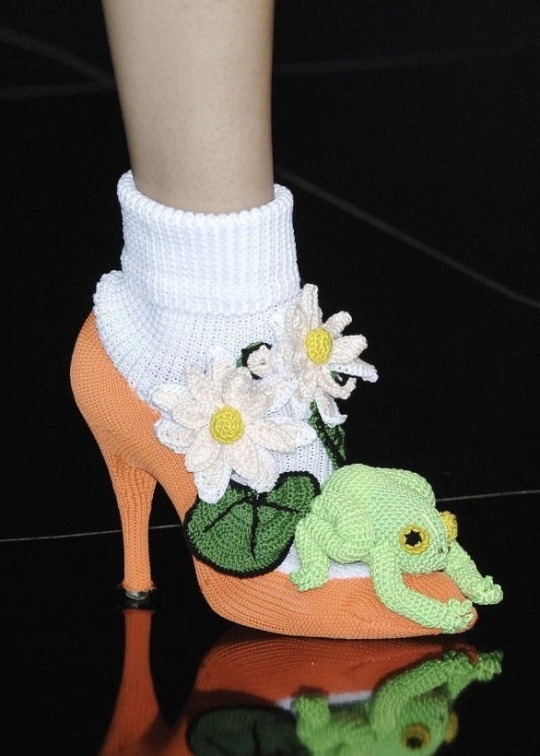

Junko Shimada spring/summer 2009
505 notes
·
View notes
Text



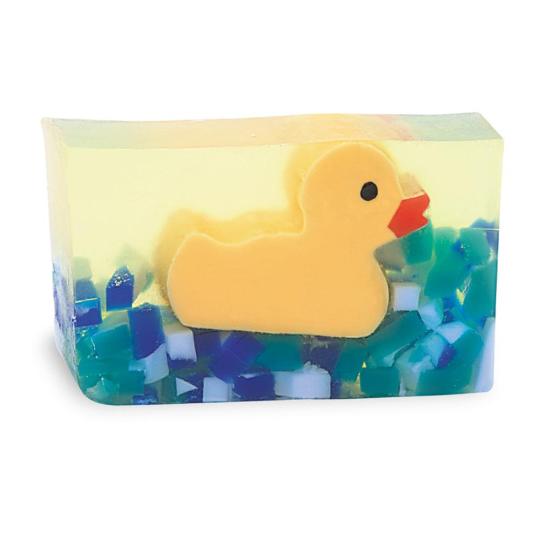
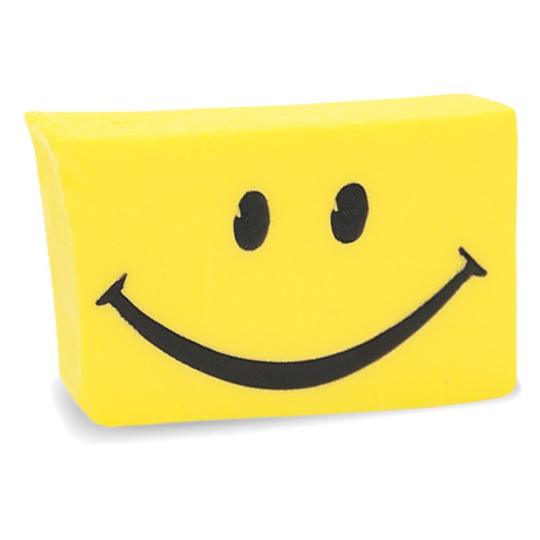

♡ Soaps by Primal Elements ♡
#cute#kidcore#soapcore#cleancore#bathcore#frog#froggy#rubber ducky#duck#whale#smiley face#jelly beans#colorful#rocket ship#happy face#bath and body#hygiene#bar soap#soap#fashion blog#shopping blog#primal elements#under 10
822 notes
·
View notes
Text

Disney Designer Collection by Steven Thompson
#steven thompson#art#illustration#disney#snow white#snow white and the seven dwarfs#cinderella#ariel#the little mermaid#jasmine#aladdin#belle#beauty and the beast#tiana#princess tiana#the princess and the frog#fashion
1K notes
·
View notes
Text
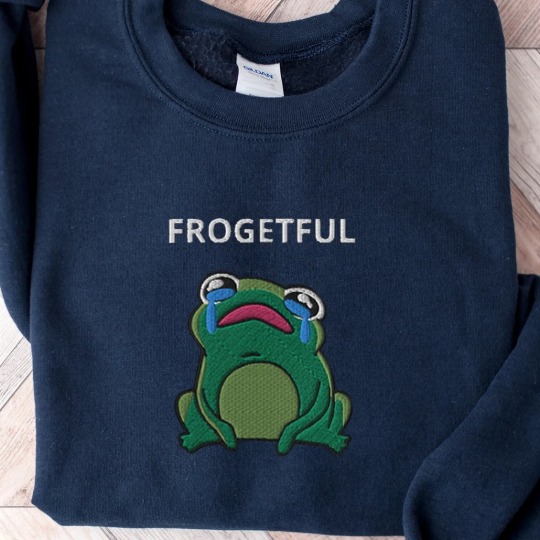

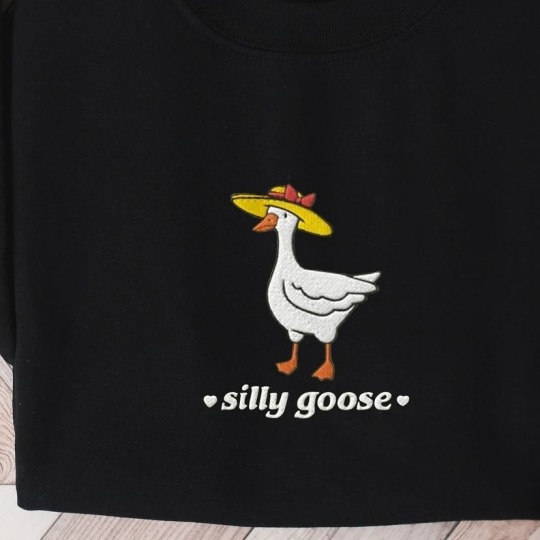
Embroidered Sweaters // Beary Mimi
1K notes
·
View notes
Text
I honestly love the clothing styles of each of the turtles in this show and I love how these styles really incorporate their personalities as well.
Like, obviously Donnie has the best sense of style, yeah? Think that’s something pretty agreed upon here. Everything we see him put together is very meticulously crafted and clean. That goes with his personality because Donnie is a very meticulous person in general, and he knows what he likes very, very well, and knows how to flaunt it in turn. Him commenting on colors he enjoys or disapproving of outfits that the others see no problem with also shows how he just generally has an eye for this kind of thing. He doesn’t just know what looks good on himself, but also what looks good on others - and I think this ties into his love of gift giving too. Donnie also has a flair for making sure that his things have his “mark” on them, and his clothing is no exception. All that he wears and how he wears them screams “Donnie.”
Mikey is really fun because his styles are honestly a pendulum between super simplistic and incredibly out there. And often, you’re going to see a lot of color or patterns to both. And in my opinion I think that all reflects really well on Mikey’s character - he’s got a colorful personality but even more than that he’s incredible sure of who he himself is. Mikey’s style, I feel, is less what looks good as clothes and more what sparks joy in Mikey himself. His bright stickers he wears are a testament of that! He’s comfortable in his own skin and his style reflects this perfectly, whether he goes for a more out-there look or a more toned down one.
Now, for Leo. Okay, I think I’m actually in the minority here I feel because Leo’s style isn’t really that bad? Hear me out- if you actually look at what he wears, try taking out, like, one accessory. Suddenly, that outfit works! He even manages to put together many good outfits in the series, but his “bad” ones are the ones that tend to stand out, alas (just like how his mistakes tend to be big ones oop-) Basically, my personal look at him is not that he’s inept at styling at all, but that he has a “too much” gene. And like everyone else, this sense of style is completely like him, too. Going too far to impress when all he needed to do was slow it down some to think things through. (And funnily enough, a lot of his outfits take random aspects from his brothers too - “nothing without them” huh?)
For Raph, I feel bad for him since pretty much all of his clothes are inevitably going to be ripped, but he makes them work pretty much each time. Like Leo, Raph tends to go more sporty with his looks, but I also noticed that his stuff often goes in that in between of comfy, cool, and cute. His pajama suit in particular comes to mind in terms of “cute” as it’s more something you’d see younger children in rather than older kids, and I think it can be a subtle nod to the fact that for all Raph tries to seem older, he’s still just a kid too.
I could probably go on, but these are just all off the top of my head - I love how the boys’ personality’s come out in so many different ways.
#rottmnt#rise of the teenage mutant ninja turtles#rottmnt headcanons#rise donnie#rise leo#rise mikey#rise raph#I love fashion actually#if you’re wondering where this came from it came from me watching hours of outfit creation vids#but yeah! I honestly could probably go more into it#but I’m going off my memory for the most part rip#Leo in particular makes me sad because I disagree with like 99% of the fandom about his fashion sense LOL#I don’t think it’s bad but it’s def not close to Donnie level#Donnie is his own category#Leo though he’s not just jerseys and ripped sleeves#he wears full eye makeup as a granny and kills doing it#his pirate costume was very well put together imo#even his regular weird frog like disguise is perfectly fine when you get rid of the goggles#I ALSO don’t think Raph’s style is bad either#my boy has more difficulty with clothes since he’s limited to the stretchier stuff but like#he’s got good style!!#I’m def looking more into this all than necessary but#watch me come back to this and change it like fifty times#if you’re wondering what I mean about Leo’s outfits taking from his brothers#look at Raph’s standard disguise (the one they go out to play basketball with)#ripped sleeves and a backward cap#one of Leo’s main outfits in The Clothes Don’t Fit the Turtle?#ripped sleeves and backwards cap#incedentally these borrowed aspects actually hinder his overall look!#his outfit without them is more HIM y’know? which says a lot about allll their individual styles
206 notes
·
View notes
Photo
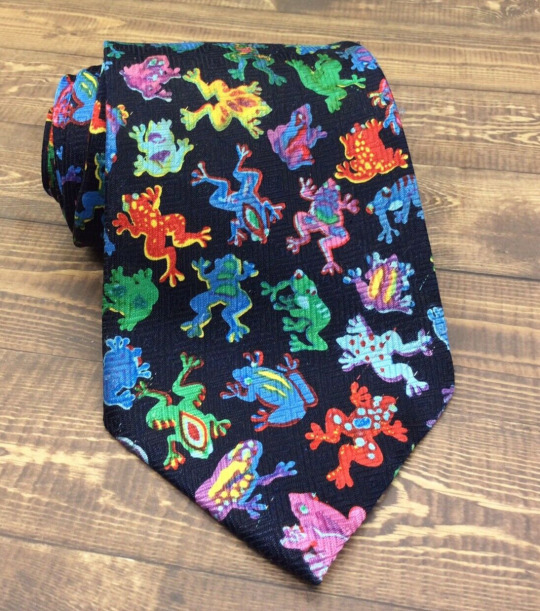
(source)
991 notes
·
View notes
Photo
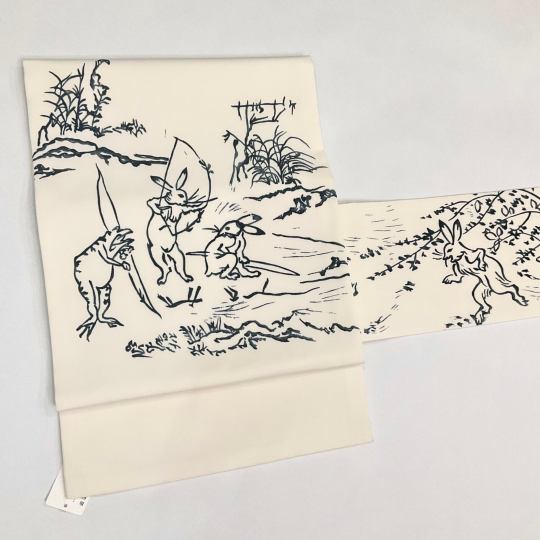


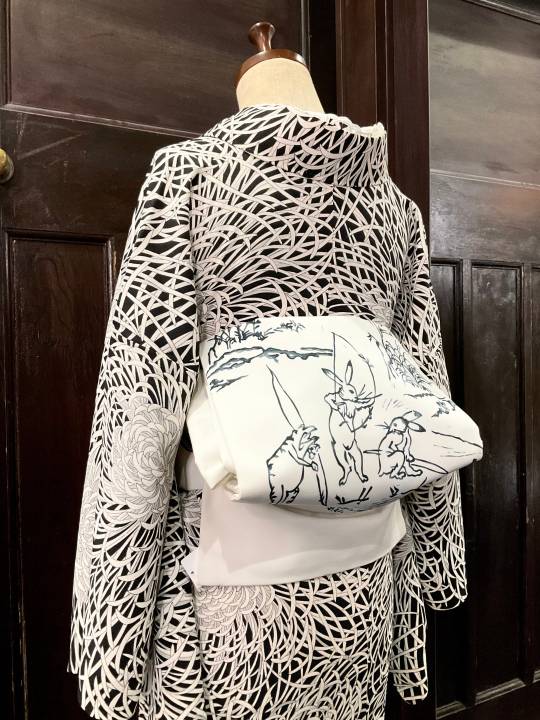
Polished b&w outfit, featuring a dynamic rangiku (wild chrysanthemum) kimono, paired with a sleek obi with scenes from the Chôjû-giga (lit. “animal caricature”) scrolls, drawings considered the oldest existing manga.
#japan#fashion#kimono#obi#choju giga#scroll#rabbit#bunny#usagi#kaeru#frog#rangiku#wild chrysanthemum#着物#帯
1K notes
·
View notes
